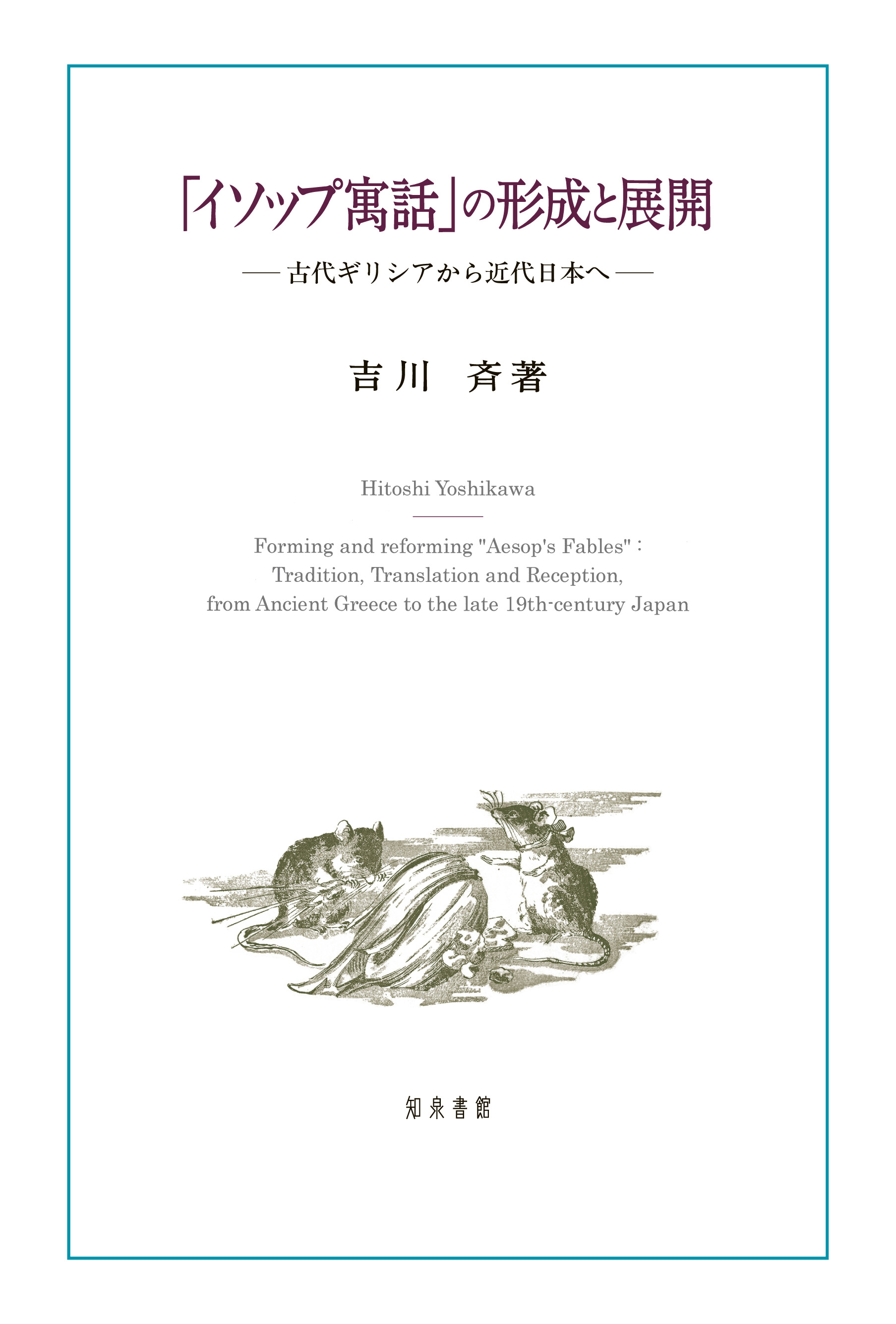
Title
“Isoppu Guuwa” no Keisei to Tenkai (Forming and reforming “Aesop’s fables” - Tradition, Translation and Reception, from Ancient Greece to the late 19th-century Japan)
Size
374 pages
Language
Japanese
Released
January 25, 2020
ISBN
9784862853103
Published by
Chisen Shokan
Book Info
See Book Availability at Library
Japanese Page
Aesop’s Fables is the topic of this book. It has a long history in Japan as one of the Western (European) classical materials transmitted in the early-modern period. From the latter half of the 16th century to the modern era, the fables were incorporated into Japan in various ways. Today, all Japanese people have surely had a chance to read, see, or hear, for example, “The Tortoise and the Hare” and “The Ant and the Grasshopper.” I became interested in the fact that while many of Aesop’s fables are popular in Japan, their historical background is still considerably unknown. I, therefore, dedicated myself to research on Aesop’s Fables to better understand the presence and significance of such classical texts in Japan.
This book comprises 10 chapters in two parts. Seven chapters are from my doctoral thesis, with revisions and additions, two chapters are based on an article that I wrote after receiving my degree, and one chapter is newly written. As its title indicates, the purpose of this book is to explain the formation and development (“re-formation”) of Aesop’s Fables from ancient Greece to modern Japan. It also provides diverse content that covers a range of topics, including classical reception studies and philological research.
A unique aspect of my book is its reading and interpretation of gūwa (the Japanese translation of “fable”), not as a genre but as “a way of reading” a story—that is, the stance of acquiring a general moral (or lesson, kyōkun) from a tale or story. In this case, the framework of “Aesop’s stories” takes precedence in considering Aesop’s Fables, since the latter is the result of adding the gūwa (fable) character to “Aesop’s stories.” In addition, although Aesop has been thought to have existed in ancient Greece, his name attached to “stories” (such as “Aesop’s stories”) means not the name of an author of them but merely a kind of “signboard” signaling that this is a group of stories of a certain kind.
Part 1 of this book focuses on the framework known as “Aesop.” Aesop-related examples used by ancient Greek and Roman authors are analyzed one by one, and this repeated analysis shows how a dynamic framework was created for the group of stories to which the name of Aesop has been attached. Thus, the formation of the collection known as Aesop’s Fables is discussed here. My argument particularly emphasizes Aristotle’s Rhetoric, and the Progymnasmata (preliminary rhetorical exercises) attributed to the first-century rhetorician Theon. My thesis for this two-pronged argument (i.e., that of classical authors and of the two works just specified) is that stories that fulfilled specific criteria were collected as functioning under the framework named “Aesop.” In regard to the stated work by Theon, each individual story was assessed independently, under the condition that a moral or instructive meaning could be drawn from it. While clarifying the fact that, from the first-century Common Era, there appeared an awareness of “Aesop’s stories” as forming a literary genre, I consider the argument of Theon as the foundational point from which Aesop’s Fables spread to the later world.
Part 2 of this book discusses the reception and re-formation of Aesop collections in the West and in modern Japan. Although, here, “Aesop collections” refers to collected “Aesop’s stories,” it became the general consensus that they constituted “fables.” Therefore, this part focuses on the development and diffusion of the so-called Aesop’s Fables. In particular, Chapters 9 and 10 present considerations of “Aesop’s collections” in modern Japan (mainly during the Meiji era), centered on the translation by On Watanabe titled Tsūzoku Isoppu Monogatari (which can be translated as “Popular Aesop’s Tales”), with a special focus on primary education in Japan during that period. I trust that the arguments presented in my book will clarify certain aspects of how these stories, which were generated in ancient Europe, arrived in Japan, and how they penetrated and became diffused throughout Japanese society.
(Written by YOSHIKAWA Hitoshi, Assistant Professor, Graduate School of Humanities and Sociology / 2021)
Table of Contents
Part 1: Forming – The base of the Tradition from Ancient Greece
Chapter 1 In Archaic Greece -- Hesiod and Archilochus
Chapter 2 In Classical Greece -- Aristophanes and Plato
Chapter 3 From Greece to Rome -- Aristotle and his influence
Chapter 4 In Roman Empire – Rhetorical Education and the frame of “Aesop’s fables”
Chapter 5 The making of Ancient collections of “Aesop’s fables” -- Phaedrus and Babrius
Part 2: Reforming – Translation and Reception to the late 19th-century Japan
Chapter 6 Codex Athous and the reception of “Aesop’s fables”
Chapter 7 Latin translation of the Aldus’ collection of “Aesop’s fables”
Chapter 8 Mother frog’s anger -- Tradition and originality in English translations
Chapter 9 Dog on a bridge -- Looking the early Meiji Japanese translation
Chapter 10 Reception of “Aesop’s fables” and the primary education in the late 19th-century Japan
Conclusion -- Glimpse of “Aesop’s fables” in the early 20th-century Japan



 Find a book
Find a book

